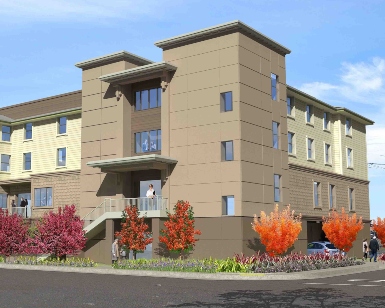San Rafael, CA – The County of Marin is moving closer to the environmental review process for about 100 properties throughout unincorporated Marin County that could eventually serve as locations for future housing. State and regional authorities have directed the County to plan for at least 3,569 new units in unincorporated areas during the eight-year cycle that begins in 2023.
At the second of two meetings about the topic, staff from the Marin County Community Development Agency (CDA) on March 15 presented all potential housing locations in unincorporated Marin to a joint session of the County Board of Supervisors and the County Planning Commission. Hundreds of comments were submitted prior to the meeting, and about 150 people participated in the videoconference.
 Marin County has a severe shortage of affordable housing and must plan for more multifamily development to accommodate needs.
Marin County has a severe shortage of affordable housing and must plan for more multifamily development to accommodate needs.After the nearly five-hour meeting, County Supervisors recommended that the number of planned units be reduced on several parcels, mostly in District 1 and District 5. The Supervisors said they understood that new parcels would be added to the master list if any existing sites are deleted and understood that there would be little or no public comment time regarding new parcels. The Board plans to finalize its recommendations at its April 12 meeting.
The 3,569 new homes for unincorporated Marin is known as the Regional Housing Needs Assessment (RHNA). Marin’s RHNA for the 2015-2022 Housing Element was 185 homes.
“With the increased need for housing and higher RHNA, this plan has identified areas where new housing could be developed in all our communities,” said CDA Deputy Director Leelee Thomas. “And while change may be a challenge for many of us, it aligns with the County’s renewed focus and commitment to equity, especially as it relates to actions intended to address the historic patterns of segregation in housing and land use.”
Board President Katie Rice, who represents District 2 in the Ross Valley, added some context in her comments at the end of the March 15 meeting. She said the Highway 101 corridor on the county’s eastern side was always the part of Marin destined to be best place for new development.
“Having lived 60 of my 61 years here in Marin County, while there hasn’t been that much development, I can tell you that the community has changed,” Rice said. “We’ve protected the environment, prevented sprawl, and preserved agriculture, but the community has still changed. … It is very wealthy and mostly very white here. We are strangling ourselves for lack of a greater mix of housing. Frankly every single community needs a greater mix of housing.”
The next step is an online-only workshop Tuesday, March 29, to discuss programs and policies related to the Housing Element. Registration is open to participate online.
The Housing Element update needs to be completed by early next year. The document is a section of the Countywide Plan, and the update is required by state law every eight years. The Housing Element must show how the County plans to accommodate population growth through housing needs if developers seek permits to build new homes. New proposed homes must be distributed among all income categories, from extremely low to above moderate. Land owned by schools, houses of worship, businesses, nonprofits, private owners, and the county government is all open for consideration.
Leading up to the March 15 meeting, most public comments shared with the County about the master list pertained to how a new development might affect nearby traffic, schools, and be vulnerable when faced with environmental hazards such as flooding or wildfires. With the new list adopted, those issues will be addressed in the environmental review of the sites that will take place this spring. By summer, a public draft will be available for review.
Including a parcel on the Housing Element list would not mean development is guaranteed or even proposed. A nonprofit or for-profit development company would have to submit plans that conform to the Countywide Plan. No development in unincorporated areas can be approved without going through a development review process.
Marin has a severe shortage of housing, especially for the local workforce and older adults. Because of some of the highest housing prices in the country, many longtime residents who purchased homes decades ago have sons and daughters who cannot afford to remain in Marin. In the current 2015-2022 Housing Element, almost two-thirds of newly constructed homes have been single-family homes in the above-moderate-income range. A thorough progress report on the 2015-2022 Housing Element will be presented to the Board of Supervisors on March 22.
The consequences of noncompliance with housing requirements could be stiff. If a jurisdiction does not meet its housing goals, it becomes ineligible for state funding to serve local transportation needs and may be subject to statewide streamlining rules, which allow for housing development with a limited local public review process. California Department of Housing and Community Development (HCD) has a new division that is designed to enforce accountability with plans to meet housing needs.
The County is also updating its Safety Element and factoring in environmental hazards and addressing the effects of climate change. An online-only workshop to go over programs and policies related to the Safety Element is scheduled for April 5. Online registration will open soon.
Details about the Housing and Safety Elements are online as well.
Questions and comments can be emailed to staff and phone inquiries can be made to (415) 473-6269. Regular updates can be found on the Housing and Safety Elements update webpage.
For disability accommodations, please phone (415) 473-6358 (voice), CA Relay 711, or e-mail the Community Development staff at least five business days in advance of the event. The County will do its best to fulfill requests received with less than five business days’ notice. Copies of documents are available in alternative formats, upon request.